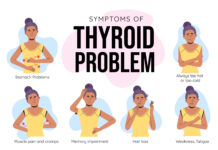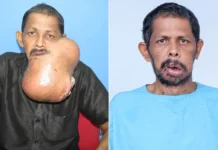India is home to a whopping 69.2 million people suffering from Diabetes and is anticipated to rise to as much as 123.4 million by 2040. The major point of concern is that it is not just a burden for older adults in the country. As per data, an estimated 97700 children in India suffer from Type 1 Diabetes Mellitus which is one of the most common pediatric endocrine illnesses. As World Diabetes Day is observed on November 14 which also happens to be Children’s Day, it is essential to be aware of the facts about juvenile diabetes. The parents must be extra careful in taking measures to prevent their children fall prey to a chronic condition like this.

Important Announcement – EasyShiksha has now started Online Internship Program “Ab India Sikhega Ghar Se”

Top Courses in Virtual Reality
More Courses With Certification
Diabetes in Children, Signs, Lifestyle medication
Type 1 Diabetes, also known as juvenile Diabetes typically occurs among those in their adolescence when the immune system damages beta cells in the pancreas that are responsible for producing insulin. As body insulin is the hormone primarily responsible for moving sugar or glucose into the body tissues, damage to beta cells cuts off that process.
Top Courses in Software Engineering
As the sugar does not move into cells due to the absence of insulin, it gets accumulated in the blood thereby causing the cells to starve. This results in high blood sugar that can eventually cause dehydration, weight loss, diabetic ketoacidosis (DKA) and damage to the body. The body starts losing water due to excessive urination and there is a generation of ketones, a chemical in the body that can result in ketoacidosis, a life-threatening condition if not treated promptly.
Top Courses in Quality Management System
Top Courses in Project Management
It can affect eyes, kidneys and heart and can cause atherosclerosis that can lead to heart attacks and strokes.
Juvenile Diabetes and its causes
While genes play a vital role, the exact cause of Type 1 Diabetes is not known. However, it is associated with a virus that directs the immune system to destroy the beta cells and those suffering from diabetes display signs of an attack known as autoantibodies. Additionally, it can occur among those with other autoimmune diseases like Grave’s diseases or vitiligo.
Signs to watch out
Although the symptoms are mostly subtle, they can become severe as well. The signs include heavy thirst, increased hunger after eating, dry mouth, nausea and vomiting, pain in your belly, frequent urination, unexplained weight loss despite eating adequately, fatigue, weakness and tiredness, blurred vision, heavy, laboured breathing, infections and rashes in skin, urinary tract or vagina, shaking and confusion, rapid breathing, fruity smell in the breath, belly pain and rare loss of consciousness.
Lifestyle medication can help
Although at present there is no way of preventing juvenile diabetes, there are ways of leading a healthy life by keeping blood sugar in check. It is mandatory to have a regular check on the blood sugar levels, adjust insulin, maintain a proper diet and regular exercise. Exercise plays a prominent role in treating Type 1 Diabetes. It is also important to balance the insulin dose and the food that one consumes with simple physical activities including the daily tasks around the house. Also, an eye must be kept to check if the blood sugar level is dropping too low and that should be avoided. A snack with carb helps in doing so.
What juvenile diabetes can lead to in the long run?
If juvenile diabetes is not dealt with appropriately, it may lead to several other life-threatening conditions in later life. Here are some of them that one must know.
 Online Courses with Certification
Online Courses with Certification
Top Courses in Personal Development
-
Retinopathy: Although this does not occur commonly before puberty, those with juvenile diabetes have a greater risk of developing this retina disorder when they get into their adulthood.
-
Kidney damage: Those with type 1 diabetes commonly suffer from a condition called nephropathy. It generally shows up 15 to 25 years after the onset of diabetes and can result in several serious problems like kidney failure and heart disease.
Other consequent disorders include poor blood circulation and nerve damage.
With adequate monitoring, a healthy lifestyle and an appropriate diet, juvenile diabetes can be controlled and well-maintained to improve the quality of life of children suffering from this chronic condition.
Authored by
Consultant – Paediatrics & Paediatric Intensive Care,
Aster CMI Hospital
Empower your team. Lead the industry
Get a subscription to a library of online courses and digital learning tools for your organization with EasyShiksha
Request NowQ. Are EasyShiksha's internships truly free?
Yes, all internships offered by EasyShiksha are completely free of charge.
Q. How can I apply for an internship with EasyShiksha?
You can apply by visiting our website, browsing available internships, and following the application instructions provided.
Q. What types of internships are available through EasyShiksha?
EasyShiksha offers a wide range of internships across technology, business, marketing, healthcare, and more. Opportunities are continuously updated.
Q. Will I receive a certificate upon completing an internship?
Yes, upon successful completion, you will receive a certificate recognizing your participation and achievements.
Q. Are EasyShiksha's internship certificates recognized by universities and employers?
Yes, the certificates are recognized by universities, colleges, and employers worldwide.
Q. Is the download of certificates free or paid?
Access to internships and courses is free, but there is a small fee to download certificates, covering administrative costs.
Q. When can I start the course?
You can choose any course and start immediately without delay.
Q. What are the course and session timings?
These are fully online courses. You can learn at any time and pace. We recommend following a routine, but it depends on your schedule.
Q. What will happen when my course is over?
After completion, you will have lifetime access to the course for future reference.
Q. Can I download the notes and study material?
Yes, you can access and download course materials and have lifetime access for future reference.
Q. What software/tools would be needed for the course?
All necessary software/tools will be shared during the training as needed.
Q. I’m unable to make a payment. What should I do?
Try using a different card or account. If the problem persists, email us at info@easyshiksha.com.
Q. Do I get the certificate in hard copy?
No, only a soft copy is provided, which can be downloaded and printed if required.
Q. The payment got deducted but shows “failed”. What to do?
Technical errors may cause this. The deducted amount will be returned to your account in 7-10 working days.
Q. Payment was successful but dashboard shows ‘Buy Now’?
Sometimes payment reflection is delayed. If it takes longer than 30 minutes, email info@easyshiksha.com with the payment screenshot.
Q. What is the refund policy?
If you face technical issues, you can request a refund. No refunds are issued once the certificate has been generated.
Q. Can I enroll in a single course?
Yes, select the course of interest, fill in the details, make payment, and start learning. You will also earn a certificate.
Q. My questions are not listed above. I need further help.
Contact us at info@easyshiksha.com for further assistance.
[/vc_column_text]
ALSO READ: russians spaceman sergey revin and chess master ivan popov visits iiit delhi
Get Course: managerial Computing
[/td_block_text_with_title][/vc_column][/vc_row]





















































































